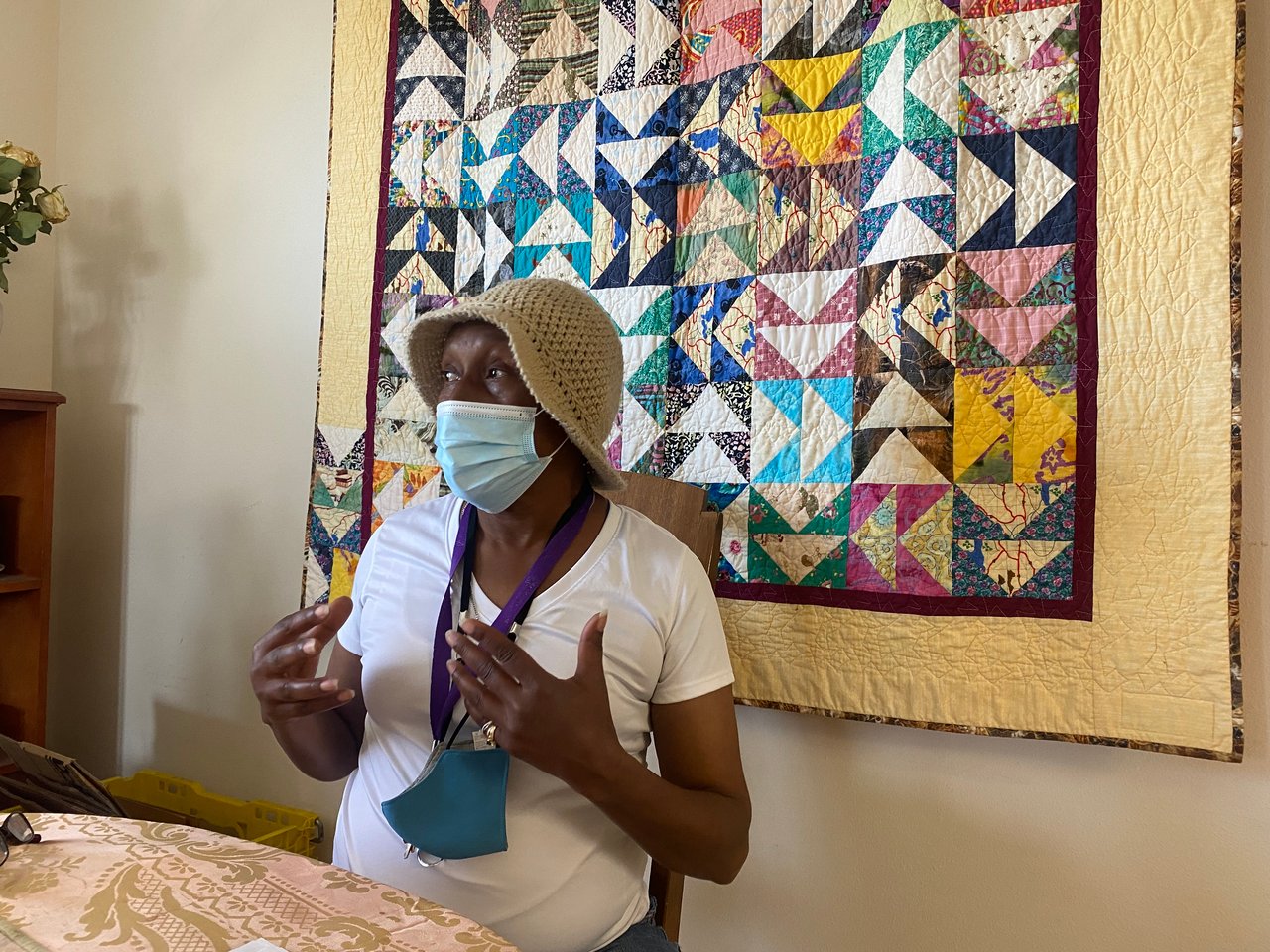OAKLAND, Calif. (CN) — After more than four decades in Oakland, Delores Hall never expected to have to rely on other people for help to become housed.
Since losing her home in 2016, Hall spent years homeless, between shelters and friends’ homes. She never felt secure until she entered St. Mary’s Center in West Oakland, and in 2020 was finally approved to live in a shared transitional house.
“I never had to sleep on the streets, thank God,” Hall said — but she struggled to ask for help at first.
“I’m used to having a job and paying my own rent,” she said. “I’m just used to being independent, I’m not used to relying on people.”
Now living in St. Mary’s Presentation House for seniors, Hall is one of many Alameda County residents who struggle to find their own home after becoming homeless in the last decade. Many spend years trying to find housing in one of the state’s most expensive regions.

Alameda County stands out among California's most populated regions facing homelessness crises, with a 22% jump in homeless residents since the last count in 2019. According to EveryOneHome, Oakland has 47% of the county’s homeless and saw an increase of 24%. Berkeley, with the next highest share of homeless at 11%, saw a 5% decrease.
By comparison, San Francisco Mayor London Breed’s office reported a 3.5% decrease in San Francisco's homeless population. Nearby Contra Costa County saw a jump of nearly 35% in all categories of homelessness, according to the community news website Danville San Ramon.
Some leaders point to success in housing people, but advocates doubt accuracy of recent homeless population counts and say the county and state must commit to funding affordable housing.
Project Roomkey, an emergency program launched by the state during the first months of the pandemic, provided the first pathway to sheltering homeless seniors and vulnerable people. According to Alameda County's Homeless Care and Coordination department, its Roomkey programs used $102 million to shelter 5,301 people during the pandemic, with 70% now in permanent housing.
Alameda County will receive a slice from $12 billion state funds for homelessness, having spent $15 million placing people in purchased hotels and other buildings to use for supportive housing, dubbed Project Homekey. The Board of Supervisors has also approved a $138 million homeless response plan and Oakland is preparing a companion plan setting goals to reduce homelessness, with a price tag estimated at $65 million. Oakland officials and Mayor Libby Schaaf declined to comment on the plan.
This past week, City Councilmember Carroll Fife demanded an accounting of recent costs for addressing homelessness and moving homeless services under the city administrator’s purview.
“It’s more expensive to keep people on the street than in permanent housing," Fife said. “We’re constantly being told we don't have the resources to house (people). I feel like if we did things differently, we might be able to. Homeless people are very, very visible to the community — but the cost that taxpayers are paying is not.”
In Berkeley, Mayor Jesse Arreguin issued a report noting the city “spends more per capita on homelessness than any other jurisdiction in the area”. Several shelters have opened in the city since 2018 and affordable housing developments are underway, such as Berkeley Way Apartments and Hope Center, which will boast 142 units and a shelter when it opens in September.
Vice Mayor Kate Harrison said she wants to see a commitment to building affordable housing in Berkeley, but noted the city has decreased homeless people living downtown “by nearly 69%” using “a hands-on approach to deal with people where they are.”
“We’ve done that without massive sweeps. We’ve done that by paying attention to the needs of each individual person," Harrison said.











